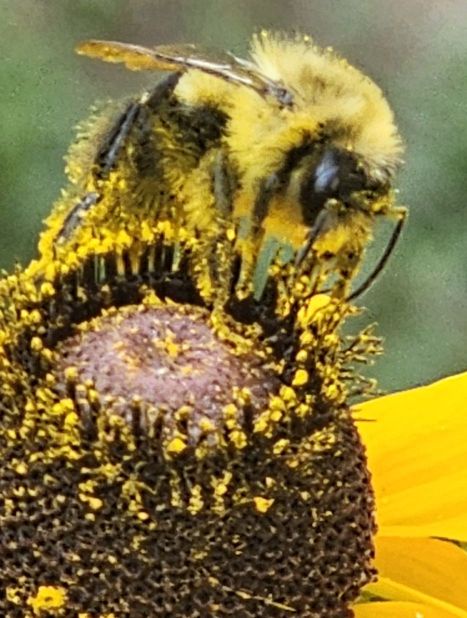Gardeners Needed!
With populations of birds, bees, butterflies and other invertebrates plummeting in the U.S., it's time for gardeners to come to the rescue!
Skeptical that gardeners can be heroes? Recent studies have proven that small increases in habitat, such as that provided in your garden, will really help.
So join the habitat rescue squad!
First, you have to understand a new way to think about gardening design and goals. It may be much different than you're used to or even expecting.
It's useful to think about three levels of gardening when it comes to helping wildlife and habitat in general.
Level 1: Traditional Gardening
Traditional Gardening in the U.S. typically means large lawn with one or two flower beds containing plants purchased at a major retailer. Pesticides are used to kill bugs and at the end of the growing season, the flower bed is cleaned out. All fallen leaves from any shrub, tree or plant are all removed.
This method basically makes a property a killing field for pollinators.
Level 2: Native Plants Supplementation
Some gardeners have graduated to the next level, Native Plant Supplementation. They have purchased and planted native flowering plants. They may have stopped using pesticides to create a better environment for the pollinators. They may have put out hummingbird feeders are other bird feeders.
This is somewhat better situation as it allows pollinators like butterflies and native bees to have access to more flower nectar and pollen. But it does not greatly support populations of insects because most caterpillars will likely not find anything to eat there. Native bees may not find nesting sites to raise their young.

A Bumble Bee, covered in pollen, on a Black-eyed Susan flower central mound.
Level 3: Habitat Gardening
Few gardeners, however, have elevated their design to a third level and created a Biodiverse Garden Habitat. To do that, you have to think about the needs of populations of different types of creatures, including their life stages.
It’s not as complicated as it sounds. Something common to do for this level is to commit an area of lawn for a meadow. Another option is to create an area with a combination of native trees, shrubs or flowers that are known to host many different species.
This blog focuses on the practical aspects of starting and succeeding in habitat gardening. Each post will provide a main topic, seasonal tips and finally one or more resources that will help you be a Habitat Hero.
Join in!